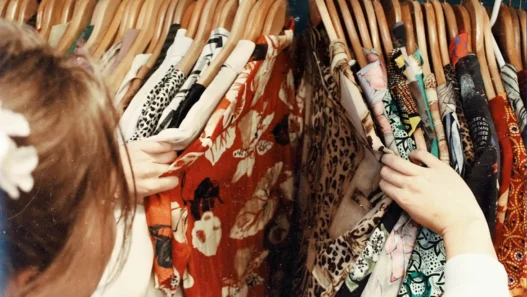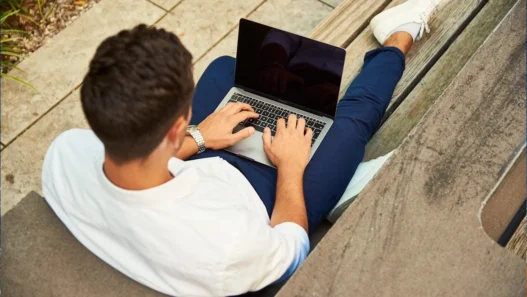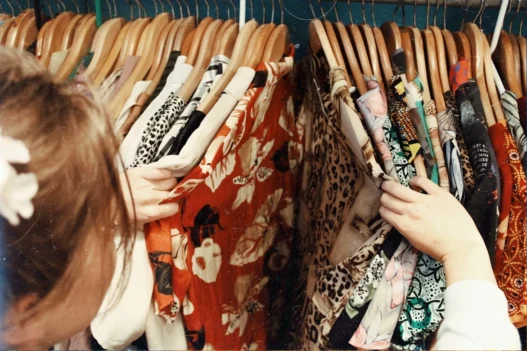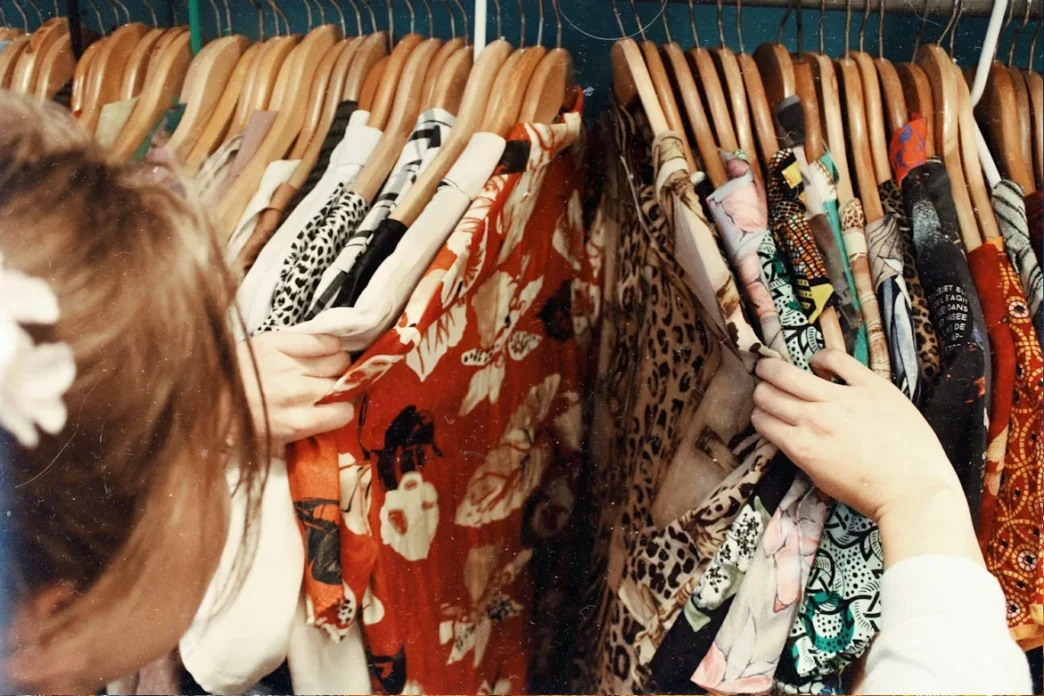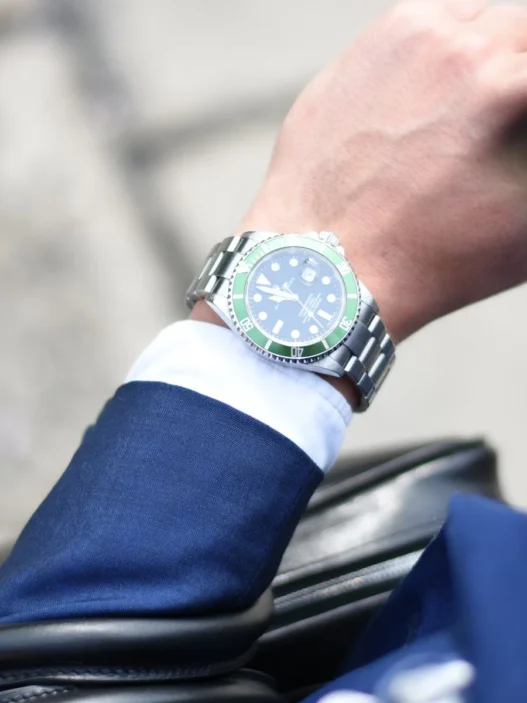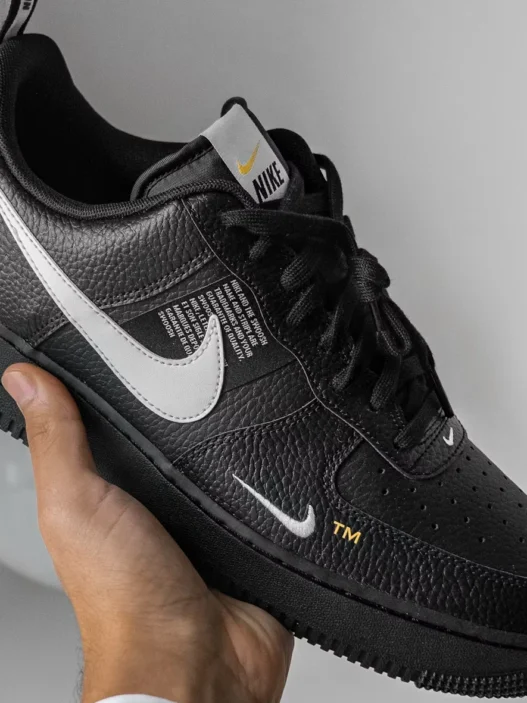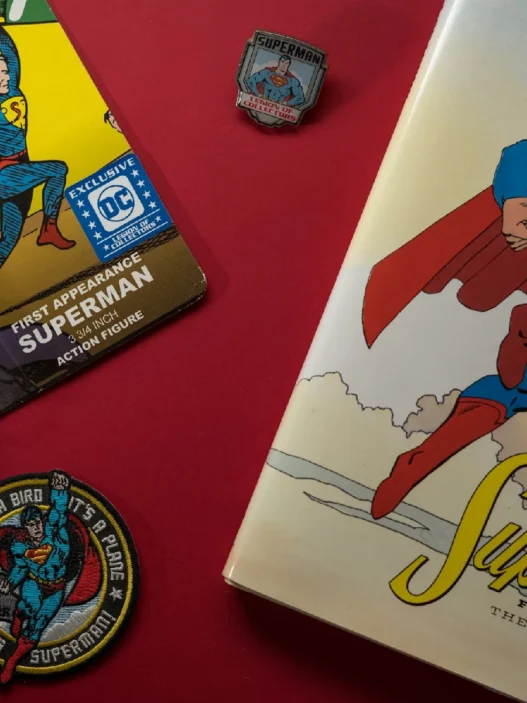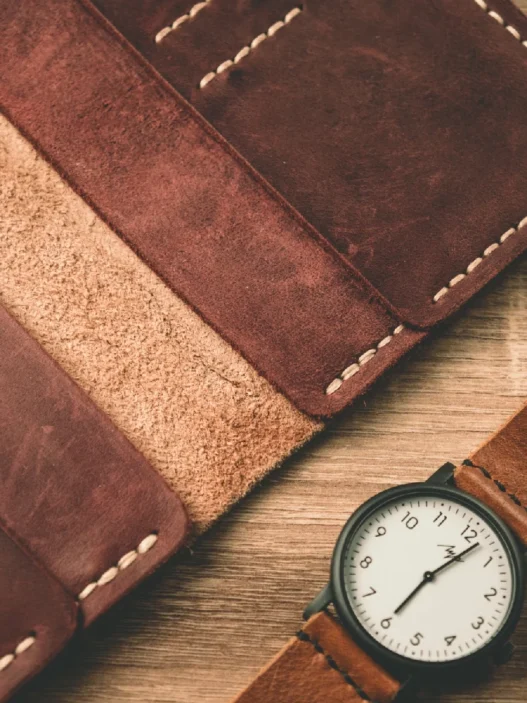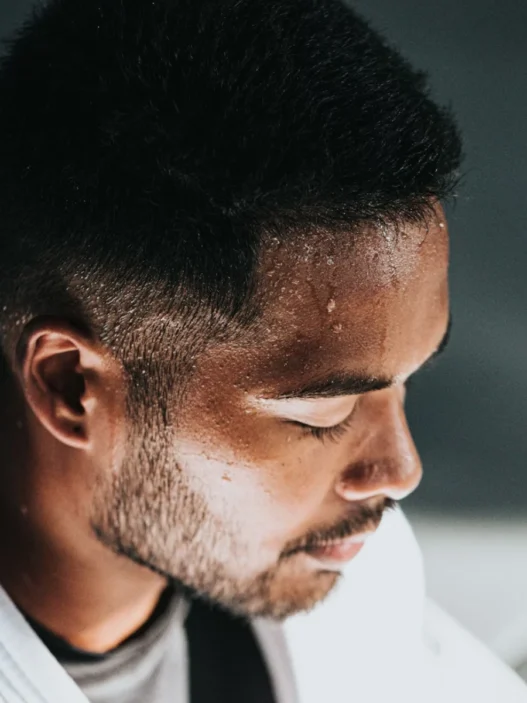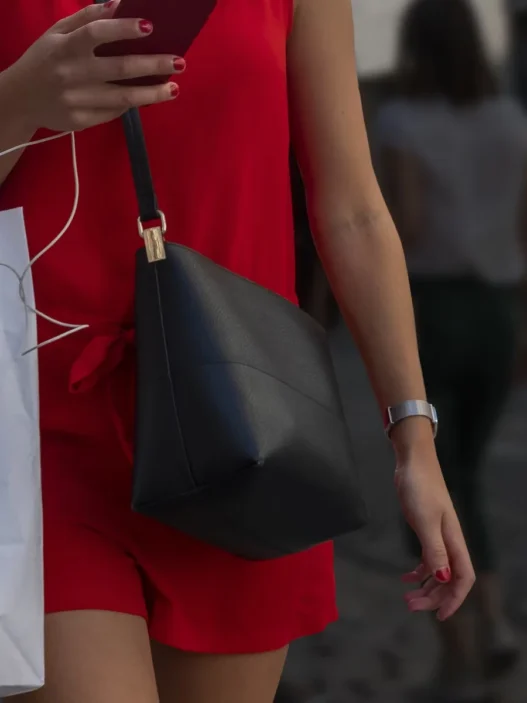In an era where climate change and ethical consumerism are reshaping every industry, the fashion world is undergoing a much-needed transformation. Sustainable fashion is no longer just a niche or trend—it’s becoming a global standard. At the heart of this shift is second-hand style, through clothing rental platforms, thrifting and resale fashion apps. Together, these are a powerful alternative to fast fashion by extending the lifecycle of garments and minimizing waste.
In the Middle East, where the appetite for style and luxury is strong, the rise of secondhand fashion platforms has made eco-conscious shopping not only accessible but aspirational. Whether you’re looking for a pre-loved designer piece, a one-time rental for a special occasion, or tips to start your thrifting journey, this blog breaks down everything you need to know to align your wardrobe with your values.
Ready to transform your closet into an eco-friendly wardrobe? Read on to discover the environmental and economic power of secondhand fashion, and how you can join the circular fashion movement today.
Why Second-hand is the New Chic
Thrifting and clothing rentals are no longer reserved for budget-conscious students or vintage collectors—they’re part of a larger global shift toward conscious consumerism.
The Rise of Secondhand Fashion and Rentals
In today’s circular fashion economy, buying secondhand or renting instead of purchasing new means reducing demand on natural resources and helping divert clothing from landfills. It’s a win for the environment, your wallet, and your personal style.
Resale and rental services are not just convenient—they’re fashion-forward. You can now access seasonal trends, luxury labels, and unique vintage pieces without contributing to the wasteful churn of fast fashion. From curated thrift shops in Dubai to clothing rental platforms offering designer dresses across the UAE, secondhand fashion is redefining what it means to be stylish in 2025.
Extending the Lifecycle of Garments
Every garment has a lifecycle—from production to wear, and eventually disposal. The problem? Most clothes are thrown away long before they’re worn out. Thrifting and rentals help disrupt this linear model by keeping clothes in circulation for longer.
When you buy secondhand or rent an outfit, you’re giving it a second life, reducing the need for new production and slowing the cycle of consumption.
This supports a more sustainable fashion ecosystem, where clothes are valued, maintained, and reused. And the impact is measurable: extending the life of a garment by just nine months can reduce its carbon footprint by 20–30%, according to the Waste and Resources Action Programme (WRAP). That’s the power of secondhand fashion—one piece at a time.
Want to reduce your fashion footprint? Start with one pre-loved item or rent your next party outfit. Small actions lead to meaningful impact.
Reducing Fashion Waste Through Circularity
Fast fashion has created an overwhelming surplus of cheap, short-lived garments. According to the Ellen MacArthur Foundation, over 92 million tonnes of textile waste is generated globally each year. Thrifting and rentals are direct responses to this crisis. By participating in the circular fashion economy, consumers can help decrease the demand for overproduction while simultaneously reducing post-consumer waste.
Clothing rental platforms make it easy to borrow beautiful, high-quality outfits for weddings, events, or vacations—without buying into disposable fashion habits. Meanwhile, resale fashion apps let you resell clothes you no longer wear, keeping them in circulation and out of landfills.
Looking to cut back on fashion waste? Explore local secondhand shops or try renting instead of buying new for your next big event.
Environmental & Economic Benefits of Thrifting and Clothing Rentals
The fashion industry is responsible for nearly 10% of global carbon emissions and consumes about 93 billion cubic meters of water annually, according to the United Nations Environment Programme. One of the most effective ways to counter this is by extending the life of garments—and that’s exactly what secondhand fashion enables.
Environmental Benefits: A Greener Closet, One Outfit at a Time
Clothing rental platforms and resale fashion apps reduce the need for new production, which in turn conserves water, limits pollution, and minimizes carbon emissions. Unlike fast fashion, which encourages frequent disposal, secondhand and rental models are rooted in the circular fashion economy, where reuse, recycling, and redistribution are the norm.
Choosing to rent or thrift even just a few pieces per year can significantly reduce your environmental impact. For example, renting a dress instead of buying a new one can save up to 1,000 liters of water—equivalent to 14 showers. That’s not just fashion—it’s sustainable fashion with real results.
Ready to make your wardrobe eco-friendly? Explore Middle East-based clothing rental platforms like Designer-24 for your next event and reduce your fashion footprint.
Economic Benefits: Save Smart, Spend Less, Look Great
Contrary to the belief that sustainable fashion is expensive, secondhand fashion actually allows consumers to save significantly while enjoying quality garments. Thrifting gives shoppers access to high-end brands and unique finds at a fraction of retail prices. Similarly, rentals allow access to luxury outfits without the long-term commitment or cost.
In the Middle East, platforms like The Luxury Closet and Bazaara make it easy to buy or sell authenticated pre-owned designer pieces. Whether you’re upgrading your style, decluttering your closet, or simply looking for great deals, the benefits of thrifting go beyond affordability—they’re also a smart financial choice.
In addition, sellers on resale fashion apps can monetize gently-used items that might otherwise go unworn. This adds value to your wardrobe and supports a more responsible consumption cycle.
Want to save money and shop smarter? Download a rental app like Bazaara or visit a curated secondhand boutique such as Retold to discover high-style without the high price.
A Win-Win Model for Consumers and the Planet
Thrifting and renting combine environmental responsibility with economic sensibility—making them an ideal solution for the modern fashion-conscious consumer. These models empower individuals to make choices that align with both their budget and their values, all while reducing waste and demand on natural resources.
The growth of clothing rental platforms and resale fashion apps in the Middle East is a clear sign that secondhand fashion is more than just a trend—it’s a viable, scalable approach to creating an eco-friendly wardrobe. As governments and private sectors across the GCC increasingly emphasize sustainability, consumer habits are following suit.
Want to be part of the change? Start small. Swap fast fashion purchases for one thrifted item this month or rent your next formal outfit instead of buying it. Every step counts toward a more sustainable future.
Popular Thrifting & Clothing Rental Platforms in the Middle East
The rise of secondhand fashion in the Middle East is being powered by a growing number of innovative platforms that combine style, sustainability, and convenience. Whether you’re searching for luxury resale, casual vintage, or event-ready rentals, these clothing rental platforms and resale fashion apps are making the circular fashion economy more accessible than ever.
Here are some of the most trusted and trending platforms you can start exploring today:
The Luxury Closet – Premium Resale, Authenticated
Headquartered in Dubai, The Luxury Closet is the region’s leading resale fashion app and platform for buying and selling authenticated pre-owned designer items. From Chanel handbags to Gucci heels, their vast collection caters to both men and women who want to indulge in luxury without compromising on sustainability.
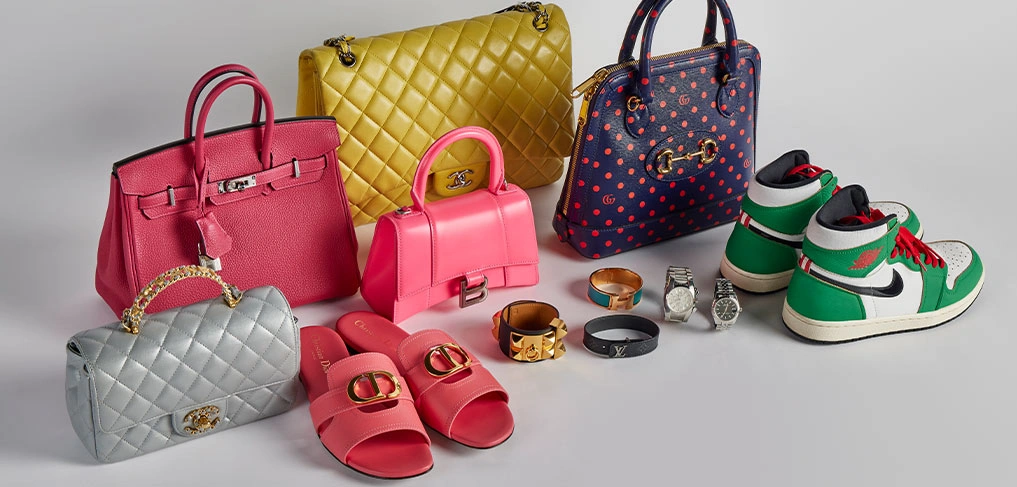
- Offers international shipping and buyer protection.
- All products undergo a rigorous authentication process.
- Also accepts gently used items from sellers looking to declutter.
Looking to build a high-end, eco-friendly wardrobe? The Luxury Closet makes secondhand luxury effortless.
Designer-24 – Luxury Fashion, Rented On Demand
Operating in the UAE, Lebanon, and beyond, Designer-24 is a leading clothing rental platform offering luxury gowns, cocktail dresses, and eveningwear. From Elie Saab to Marchesa, you can rent designer looks for a fraction of the retail price.
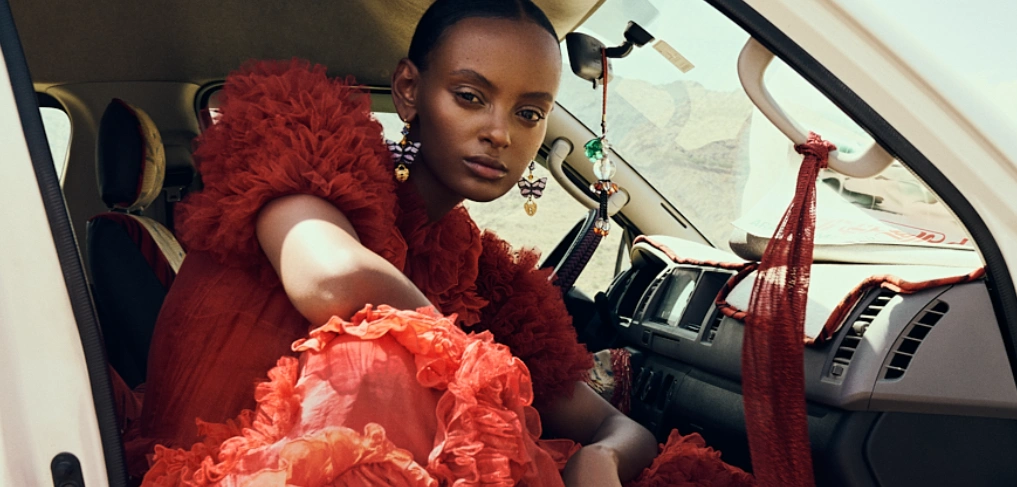
- Wide range of premium designers and limited-edition collections.
- Same-day delivery available in select cities.
- Tailored for formal occasions and black-tie events.
Planning a glamorous night out? Browse Designer-24’s rental collection and embrace luxury the sustainable way.
Retold – Curated Secondhand Fashion Boutique
Retold offers a boutique thrift experience in Dubai, curating high-quality pre-owned pieces for fashion-forward shoppers. Their online store features a handpicked collection of stylish clothing, shoes, and accessories that feel modern and intentional.
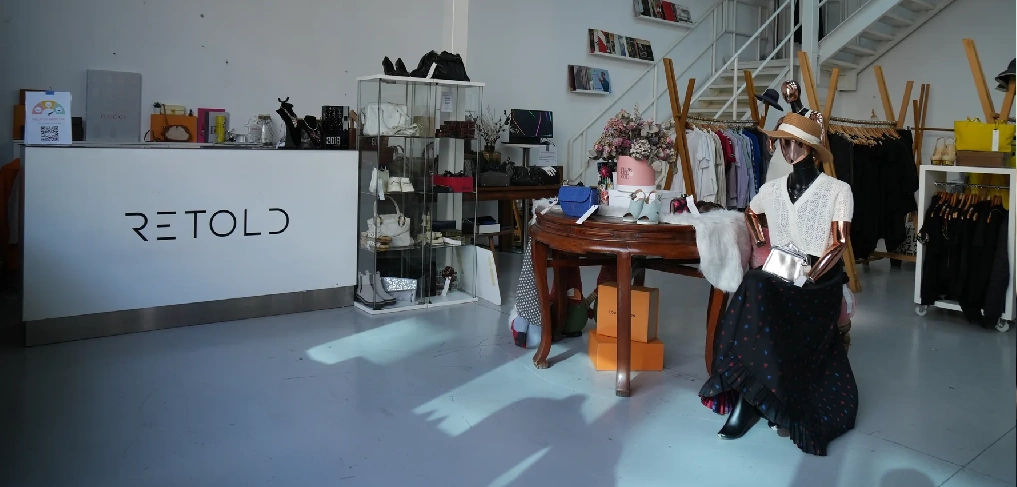
- Highly curated inventory with a clean, elevated aesthetic.
- Offers both local and global brands in excellent condition.
- Ideal for those who want to thrift without the chaos of digging through racks.
Ready to upgrade your wardrobe with timeless, secondhand finds? Explore Retold for a chic and conscious alternative to fast fashion.
These platforms prove that sustainable fashion is not only practical—it’s exciting, elegant, and within reach. Whether you’re building an eco-friendly wardrobe, testing the waters with thrifting, or trying a clothing rental platform for the first time, the Middle East is full of smart, stylish solutions.
Explore one of these platforms today and take your first step into the circular fashion economy. Your style—and the planet—will thank you.
Thrifting Tips for Beginners
Whether you’re new to secondhand shopping or transitioning to a more eco-friendly wardrobe, thrifting can be an enjoyable and rewarding experience when done right. Here are some beginner-friendly thrifting tips to help you shop smarter, save more, and stay sustainable:
1. Start With a Goal
Go into your thrift shopping with a clear idea of what you need—whether it’s a classic blazer, everyday denim, or a statement accessory. This helps avoid impulse buys and keeps your closet intentional, not overcrowded.
Looking to build a capsule wardrobe? Start by identifying essentials and shop secondhand first.
2. Know Your Measurements
Size labels vary widely across brands and eras, especially with vintage items. Bring your exact measurements and a tape measure to avoid trial-room guesswork—especially when shopping at flea markets or online.
3. Be Patient and Persistent
Thrifting is a treasure hunt. You may not find what you’re looking for right away, but consistent browsing leads to amazing discoveries. Explore online platforms like Bazaara or visit boutiques like Retold regularly to stay ahead of new arrivals.
4. Examine Items Closely
Always check for stains, loose seams, missing buttons, or fabric wear. While many flaws are fixable, knowing what you’re buying ensures you’re making a valuable, lasting addition to your wardrobe.
5. Mix Online and Offline Thrifting
Digital resale fashion apps like The Luxury Closet or La Reina offer convenience and curated finds. But local thrift shops and vintage markets in cities like Dubai and Beirut often provide one-of-a-kind gems and community vibes.
6. Don’t Underestimate Tailoring
That too-long pair of pants or slightly loose dress? A quick tailor visit can turn a great find into a perfect fit. Investing in alterations also extends the life of your clothing—a core principle of sustainable fashion.
Start small, but start today. The more you thrift, the easier it becomes—and the more impact you make.
Making Sustainable Fashion Accessible for All
For many, the idea of sustainable fashion once felt like a luxury—limited to niche eco-brands or expensive ethical labels. But thanks to the rapid rise of secondhand fashion, resale fashion apps, and clothing rental platforms, building an eco-friendly wardrobe is now more affordable, more stylish, and more inclusive than ever before.
Across the Middle East, platforms like Designer-24 and Bazaara are bridging the gap between high fashion and sustainability. Whether you’re a student, a working professional, or a fashion enthusiast, there’s now a secondhand solution that fits your lifestyle, budget, and aesthetic.
Even more encouraging is the cultural shift happening around consumption. Consumers are asking questions about where their clothes come from, how they’re made, and where they go when they’re discarded. This awareness is building a new generation of shoppers committed to the circular fashion economy—not just as a trend, but as a necessity.
The future of fashion is circular, conscious, and community-driven. By embracing secondhand fashion through thrifting and clothing rental platforms, we’re not only reducing waste and carbon emissions—we’re redefining what it means to be stylish.
You don’t need to overhaul your closet overnight. Just start with one secondhand swap, one rental outfit, or one resale listing—and you’ll be part of a much bigger movement.
Frequently Asked Questions (FAQ) About Thrifting
Thrifting means shopping for secondhand or pre-owned items—usually clothing, accessories, or home goods—at thrift stores, online resale platforms, flea markets, or charity shops. It’s part of the circular fashion economy and promotes sustainability by extending the life of garments.
To go thrifting means to visit stores or platforms that sell secondhand items, often with the goal of finding unique, affordable, or vintage fashion. It’s a fun, often budget-friendly way to shop while reducing fashion waste.
Gen Z embraces thrifting because it aligns with their values: sustainability, individuality, and affordability. Thrifted fashion allows them to express their personal style, avoid fast fashion, and make more ethical shopping choices—all while sticking to a budget.
While thrifted items are typically more affordable than new ones, thrift doesn’t mean low quality. In fact, many secondhand pieces are designer, vintage, or premium-quality items that simply had a previous owner.
Yes—thrifting is healthy for the planet and, when done with care, for you too. Always wash or dry-clean thrifted clothes before wearing them. Buying secondhand also reduces demand for mass production, which lowers environmental harm and supports sustainable fashion goals.
In most cases, yes. Thrifting is better than fast fashion because it reduces textile waste, conserves resources, and discourages overproduction. It helps support a more sustainable and responsible fashion economy.
Thrifting can be affordable or premium, depending on where you shop. Luxury resale platforms like The Luxury Closet offer authenticated designer items at discounted prices, while places like Bazaara and local thrift shops offer more budget-friendly finds.
Yes—buying thrift is good for your wallet, your style, and the environment. It’s a conscious way to build an eco-friendly wardrobe while supporting the principles of reuse and sustainability.





